[vc_row][vc_column width=”1/4″][vc_single_image image=”2077″ img_size=”medium”][/vc_column][vc_column width=”3/4″][vc_column_text]31 January 2016 – HikmahWay Institute once again had successfully organised the monthly online webinar, titled, “How the Quran is Preserved”. This very important topic was presented by Sheikh Aslam AbuIsmaeel and attended by people from different parts of the world.
In the first half, Sheikh Aslam presented factual evidence from historical finding and authentic hadith narration about the preservation and protection of the Quran. He took the attendees back in time and demystified the understanding of ways that Allah protected the Quran even during the time of the Prophet peace be upon him.
Then, He moved to the preservation and protection of the Quran after the death of our beloved Rasulullah. Here, Sheikh Aslam explained how the Quran was preserved in a variety of ways – collected in one authoritative volume during the period of Abu Bakr by leading expert companion, Zaid ibn Thabit. Next it was copied into accurate copies of the original during the period of Uthman (r.a) and sent along with experts to each corner of the Muslim world. Finally, skeletal dots were employed to write Quranic alphabet followed by vowel diacritical signs. Hence not only was the text of the Quran was preserved, but also its meaning and recitation were.
In the Second Half, the participants were presented with lists of companion of the Prophet (Peace and blessing be upon him) that memorised the Quran and others who were authoritative scribes of the Quran. During this session, Sheikh Aslam put forward the counter argument to some who may favour written preservation above what developed refined memory could preserve the Quran to perfection in those days.
The final section set forth a highly logical, rational and common sense way to realise and conclude logically that the Quran had to have been preserved otherwise makes little logic!
As an appendix to the talk, the highly intriguing puzzle of grasping what the 7 Quranic dialects were as distinct to the Mutawatir recitations.
The webinar ended by revisiting photos of some of the 250,000 Quran manuscripts that exist in the world today! Several images of the first century Quran were displayed twice.during the webinar; and then moved to the highly anticipated way. Question & Answer session.
To Learn more about this important topic head over to our short online course on this topic.[/vc_column_text][/vc_column][/vc_row]
